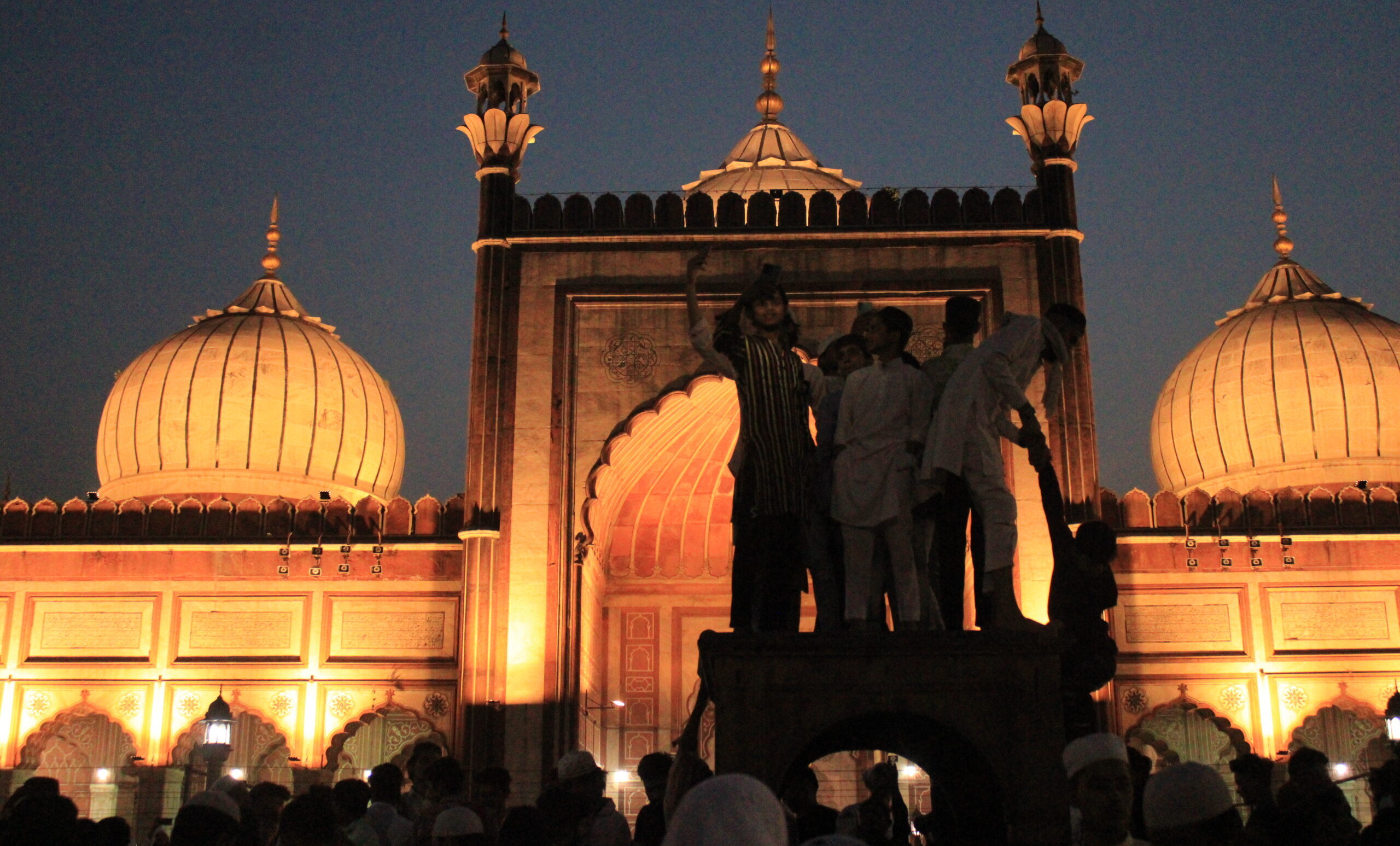
Boys after iftar were spotted standing on this elevated structure to click photos. All photos by Shruty Yadav.
While the beauty and chaos of life through some of the narrowest lanes in the city appeals to many, some are simply allured by Matia Mahal’s legacy food outlets like Karim’s, Aslam’s, Qureshi Kebab, and authentic sweet dishes like shahi tukda.
At dusk, the market behind Jama Masjid and outside Matia Mahal begins to prepare for Iftar. A short silence is followed by the prayers recited on the Masjid speakers. Soon after, the Masjid courtyard starts bustling with a stream of people entering and leaving the mosque, and some rushing to get photographs clicked.
On 15 April, iftar was observed across Delhi around 6:35 pm. Those observing roza do not eat and drink all day, and only break their fast after sunset. This meal is called iftar. Another meal, also called suhoor or sehri, is consumed before sunrise before a new day of fasting starts. A month-long roza during Ramzan is marked with daily celebrations until Eid.
The chandelier inside the mosque sparkles throughout the evening, illuminating the pond at the entrance of the praying area. Many sit around the pond, some wash their hands in it and others pour water on their heads as part of the Wudu or Wuzu ritual. Some boys cheerfully gather around on an elevated platform besides the pond, taking pictures and catching a glimpse of the masjid from the top.
Scores of people sit in circles, with many families feasting and praying en-masse. The men are mostly seen offering prayers inside, while children and women pray in the sprawling courtyard.
Many foreign tourists frequently come here to capture the lively atmosphere. The masjid that was built around 1650 by Mughal emperor Shah Jahan was inaugurated in 1656, and has a capacity to hold 25,000 visitors at a time.
Many shopkeepers and vendors sell drinks like mohabbat-ka-sharbat made from Rooh Afza, cold milk and watermelon. Some other vendors sell water bottles, khajur (dates) and other dry fruits, besides a vast number of delicacies. These include food items like kebabs, nahari, kachori, biryani, and shahi tukda – a sweet dish made of bread which is then served with rabri, vanilla or mango ice-cream as garnishing.
Such a sight at Jama Masjid is now routine, a ritual for the people coming here. But it takes will power to make it to the inside area of the masjid premises, as an overwhelming crowd is often seen hovering over the main entry gates during Ramzan.
A monument as well as a place of worship, Jama Masjid still stands tall as the meeting point of religion, culture and history.
For more stories that cover the ongoings of Delhi NCR, follow us on:
Instagram: https://www.instagram.com/thepatriot_in/
Twitter: https://twitter.com/Patriot_Delhi
Facebook: https://www.facebook.com/Thepatriotnewsindia
Delhi government to install air purifiers in 10,000 classrooms in the first phase to provide…
Dense fog disrupted operations at Delhi airport on Friday, leading to 79 flight cancellations and…
After past differences, Karan Johar and Kartik Aaryan finally collaborate on Tu Meri Main Tera…
Delhi Fire Service has initiated comprehensive fire safety inspection drive in restaurants, hotels and clubs…
Out of 40 air quality monitoring stations across the city, 14 recorded severe air quality…
Govt, however, acknowledged that air pollution is one of the triggering factors for respiratory ailments…